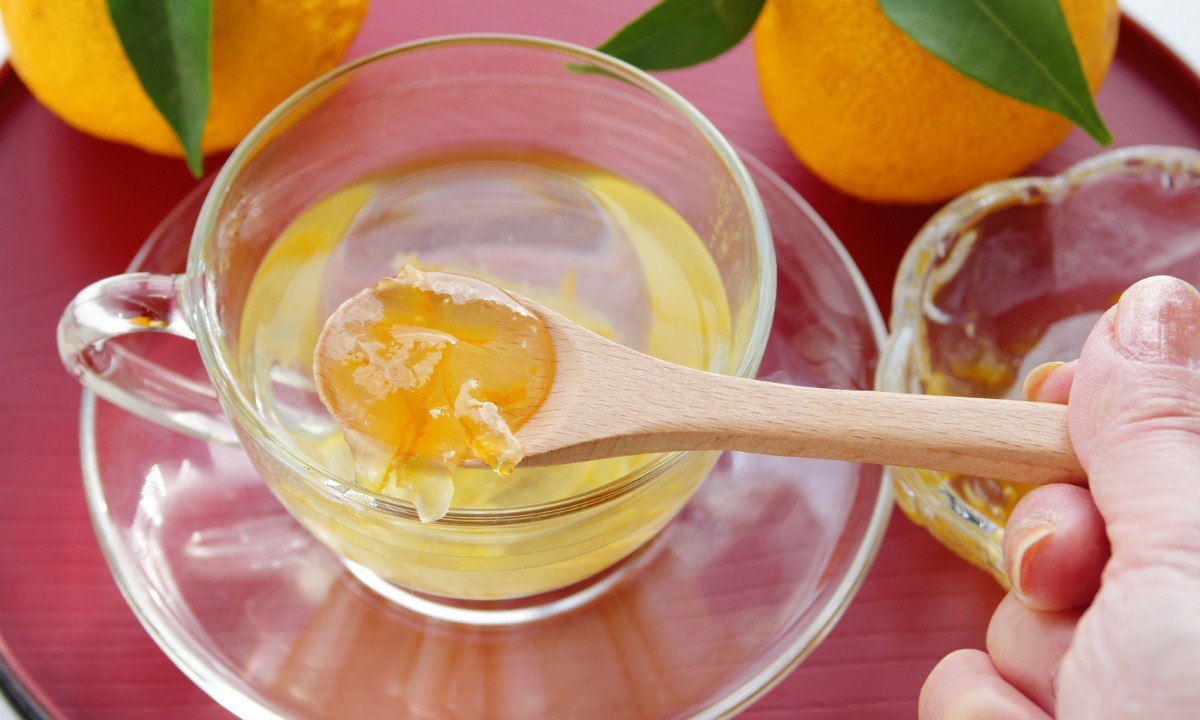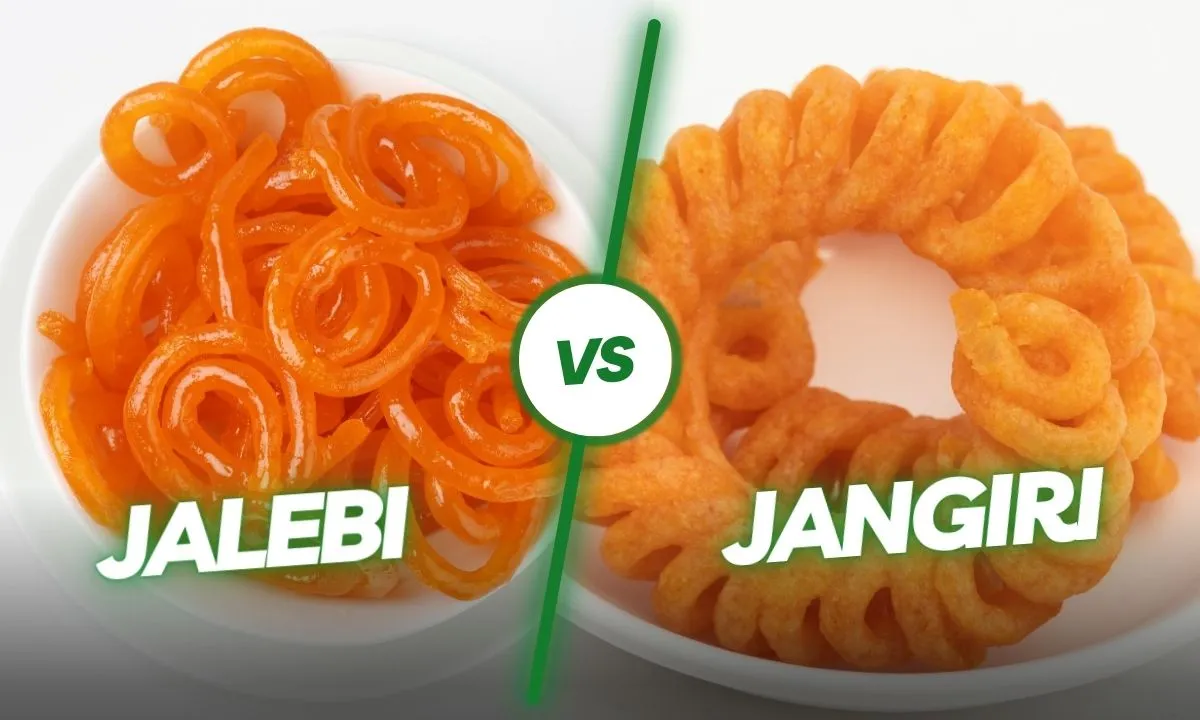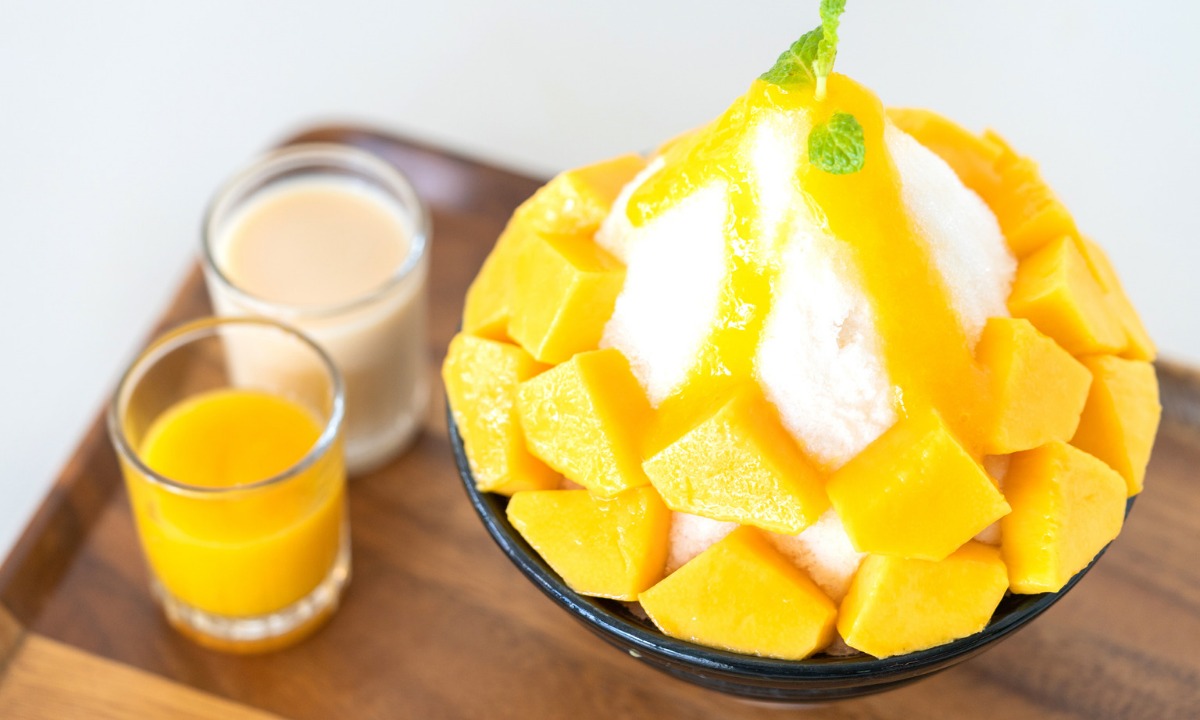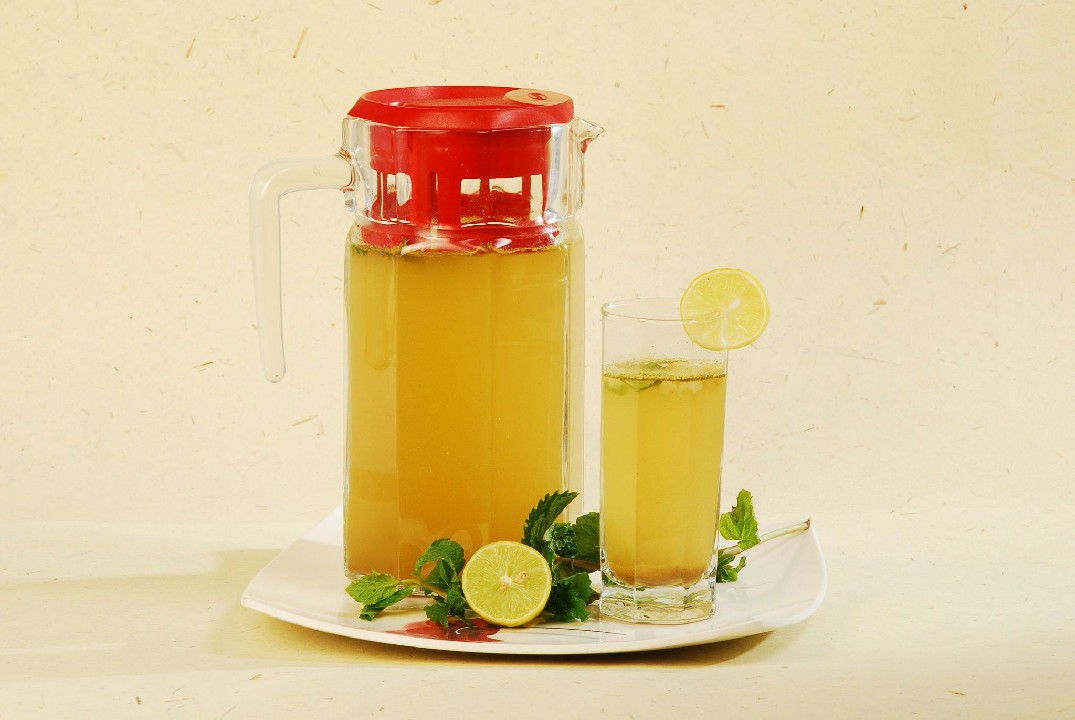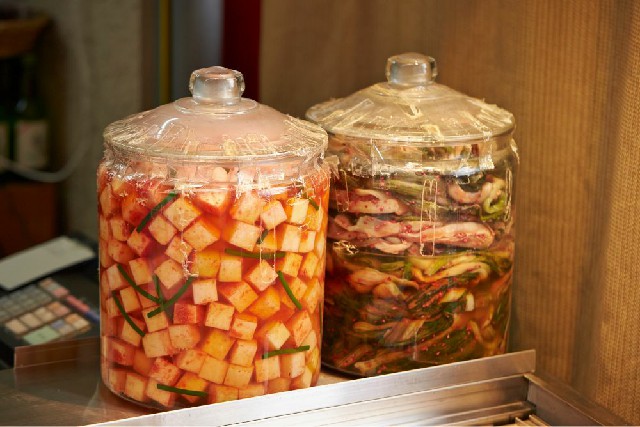
If you are a foodie, then these Korean pickles will make you tickle. These Korean pickles are spicy, tangy and sweet.
The spicy, sour and sweet Korean pickles are a taste sensation. Korean pickles are healthy and have unique aromatic flavors just like korean fruits.
These Korean pickles are rich in flavors, consisting of pepper and ginger-garlic and are slightly sweet. The ingredients primarily used in these pickles are radishes and cucumber.
Gochugaru, a staple in Korean cooking, is a coarsely ground dry chili pepper. It has a smokey and sweet flavor.
These Korean pickles are easy to prepare and can go with any Korean dish or be consumed as an appetizer.
1. Kimchi
When it comes to Korean pickles, kimchi is a must-try. Koreans have made tasty, titillating and attractive fermented vegetable pickles.
A classic appetizer, starter or a side dish to any Korean meal, kimchi, a spicy, salty, sweet and sour vegetable, is sliced and tied in a bundle. It is marinated in brine with hot chili peppers, leeks, sugar, salty fish paste, ginger and garlic.
Originally it was called chimchae, which means soaked vegetables. Traditionally kimchi was soaked in brine or beef stock however other ingredients and seasonings began to be added to the pot. Kimchi is an ancient dish that is gaining popularity all over the world.
2. Baechu-Kimchi
The name baechu is derived from one of the ingredients used in this pickle. Napa cabbage, known as baechu, is an essential kimchi variety in South Korea.
This dish varies significantly as most variations are made with whole napa cabbages that are generously coated with a mixture of onions, glutinous rice paste, gochugaru chili pepper flakes, garlic, fish sauce, ginger and jeotgal, i.e., fermented seafood.
The other common ingredients include sliced radishes, carrots and green onions. Also, other types of seasonings and condiments can be added.
Like other kimchi versions, baechu-kimchi can be made in onggi – a Korean earthenware that is sustainable for fermentation.
3. Kkakdugi
Another yummy Korean pickle is Kkakdgi. This kimchi variety uses radishes as its main ingredient. ‘Mu’ is the Korean name for radish. Kkakdugi is a side dish (banchan) served in traditional Korean restaurants.
In this kimchi variety, radishes are cut into cubes and then coated in the spicy combination of onions, chili powder and ginger before they are left to ferment for a couple of days.
Apart from the basic version of Kkakdugi, several other varieties may slightly differ in preparation or additional ingredients. Kimchi should be left for at least a couple of days or preferably longer, allowing it to ferment and achieve its prominent spicy-sour flavor.
4. Dongchimi
Dongchimi is a winter staple white radish pickle in South Korea. Korean radish, known as Mu, is the main ingredient of this dish.
Small radishes can be pickled whole; however, the larger radishes need to be sliced before being doused in a sweet, salty brine.
Small radishes can be pickled whole; however, the larger radishes need to be sliced before being doused in a sweet, salty brine.
Dongchimi can be served as a refreshing and nourishing appetizer, a side dish, or a base for a cold noodle.
5. Oi Sobagi
Now let’s talk about this summer’s favorite kimchi variety: partially quartered cucumbers brined or salted and then stuffed with the kimchi paste.
The cucumbers can be sliced into smaller quarters and coated in the kimchi paste. Oi sobagi can be served with Korean soup or stews, which is enjoyed best when fresh.
In oi sobagi, the kimchi paste includes chili flakes, anchovy sauce or fish sauce, finely chopped garlic, ginger, chives and sometimes carrots or Korean radish.
6. Oiji
Oiji is a Korean cucumber pickle that is fermented in salt water. This is an ancient technique to preserve cucumbers beyond their growing season. Oiji stays fresh without any canning, and no acidic liquid is used.
A deep tangy flavor is obtained during fermentation, and the color turns golden yellow and has a crunchy texture, slightly chewy. Oiji is an essential food item in Korean households and can be stored in a large earthenware known as hangahri in Korea. Nowadays, oiji is readily available in Korean supermarkets.
7. Chonggak kimchi
Just like other kimchi, radish is used as the main ingredient in the preparation of chonggak kimchi. This variety of kimchi is made with chonggakmu, a small-sized, crispy and firm ponytail radish with a tender green stem.
In the brine or salted water, radishes along with stems are coated. And then generously coated in a kimchi paste before they are left to ferment.
In the brine or salted water, radishes along with stems are coated. And then generously coated in a kimchi paste before they are left to ferment.
8. Jangajji
Jangajji is a type of Korean vegetable pickle prepared by simple brine with 3 ingredients – soy sauce, sugar and vinegar. This Korean vegetable pickle in soy sauce is highly popular in Korea.
Jangajji Korean pickle goes with any Korean dish and is best enjoyed with grilled meat dishes. This kind of pickles has a wide variety. Some are pickled in soy sauce, others in doenjang (fermented soybean paste) and gochujang (red chili pepper paste).
Jangajji is a quick pickling and can be prepared whenever you wish. This pickle is not fermented because it consists of a vinegar solution.
9. Gat kimchi
Let us discuss this exciting kimchi variety which tastes fantastic when served as a side dish. Gat kimchi is prepared with Gat, i.e., mustard leaves coated in a spicy mixture of ginger, garlic, chili flakes, finely sliced onions or scallions, and fermented anchovy paste can also be added.
Before the kimchi is left to ferment, the greens are roughly chopped before coating them in the paste and then left to ferment.
Gat kimchi is famous and is appreciated because of the intense flavors of the leaves that directly complement the spicy chili paste.
10. Gochu Jangajji
Another pickle for you to add to your favorite Korean pickles list. Gochu Jangajji is a Korean green chili pickle with a sweet and sour flavor and crunchy texture.
This Korean pickle can be seasoned with spicy chili sauce for a richer flavor. They are easy to make but take a little longer during the pickling process. It takes between 3 days to a week, depending upon the preparation of the chilies.
Gochu Jangajji can be a delicious side dish or served with cooked rice or Korean BBQ. You can pair them with your favorite sub or hot dog.
Now that you have basic knowledge about Korean pickles, you must try them when you visit Korea.
Try the classic Korean kimchi first. You can also prepare these spicy pickles at your home. You can have them as a starter, appetizer, or a side dish whether you are Asian or American.
